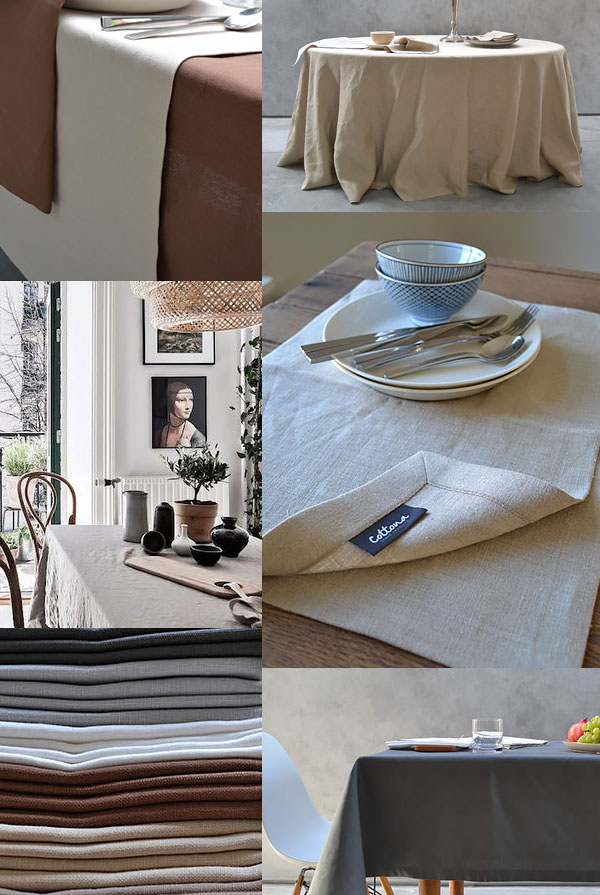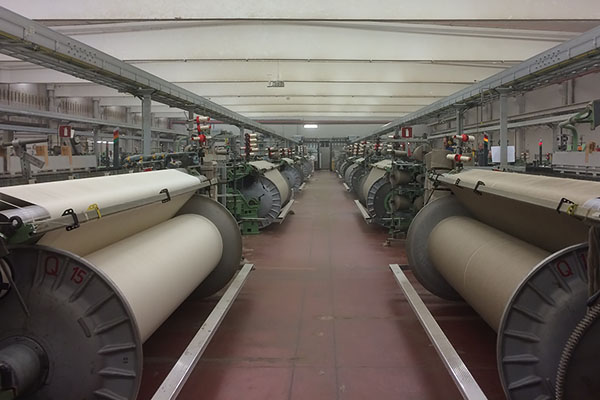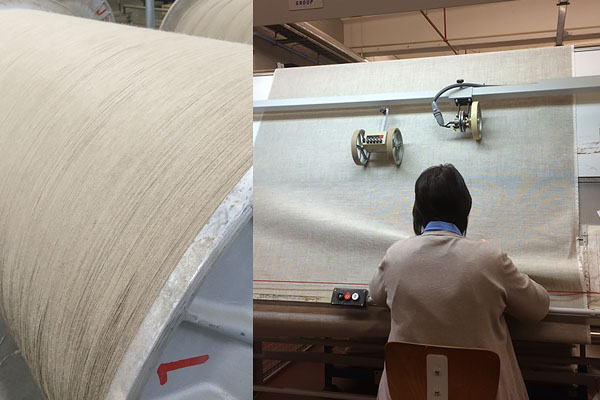Linen is the classic table linen material. I have written before about my personal preference for this fabric. I love all fabrics, but if I had to choose one, it would be linen. Table linen is easy to care for. Let it dry outside and, as far as I’m concerned, spread it on the table without ironing. Table linens from Cottona come in two qualities: natural linen and hotel-quality linen.
My partner and I were recently visiting one of the weavers with whom we work. Although we now know how it works, I still enjoy going by. The endless rolls of fabric, the rattle of the machines and the weaving process – I find it all fascinating. We think it’s important to visit our suppliers regularly. We discuss new products and collections, talk about delivery times, and it’s just nice to get to know the people a bit better. For Cottona, we do not just buy pieces of fabric; rather, we have a long-term relationship with our suppliers and work together on a beautiful final product. That applies for our table linens and for other fabrics from our collection.
Table linens – tips
- Linen is one of the few weaves that is still made in western Europe on a large scale.
- Growth cycle: March to July.
- Every flax plant only blooms for one day.
- Retting and turning, scutching and combing are traditional processes that ready the flax for further processing.
- Linen is soft and simultaneously strong and durable.
- The more often it is used, the stronger it becomes.
- The fabric is colour-fast, easy to wash and non-allergenic.
- For cultivating flax, much less pesticide and fertilizer are needed than for other crops.
- The by-products of linen are raw materials for fibreboard, or are used for the production of bank notes.


